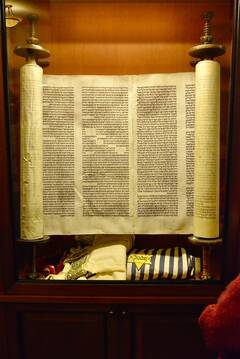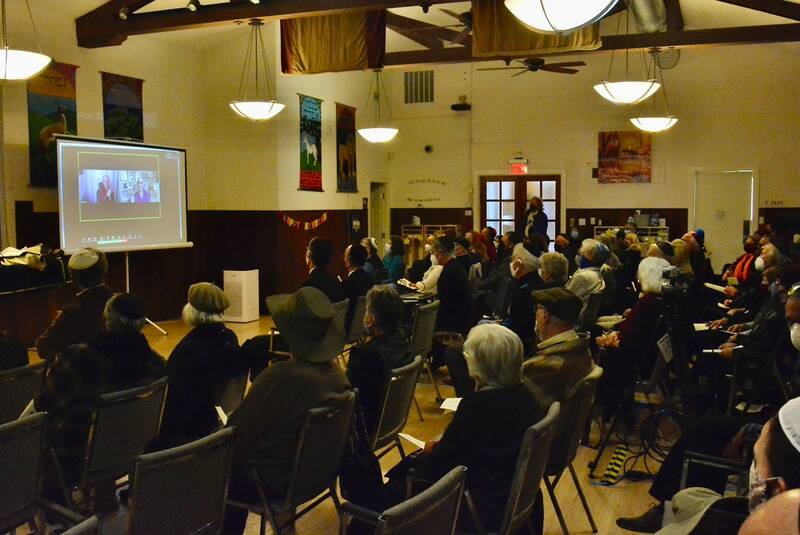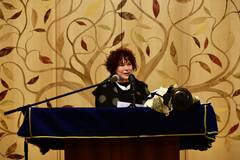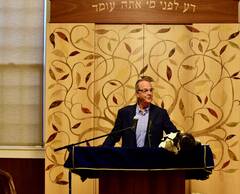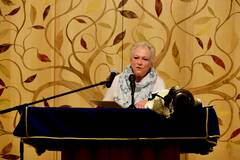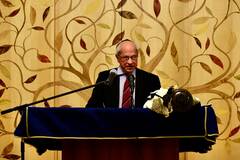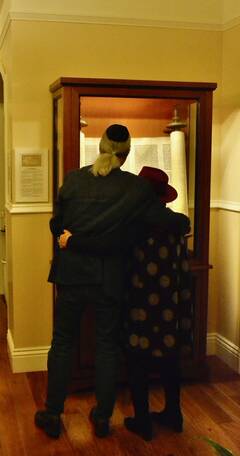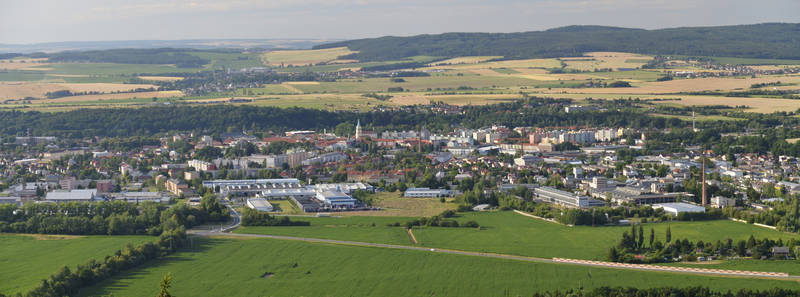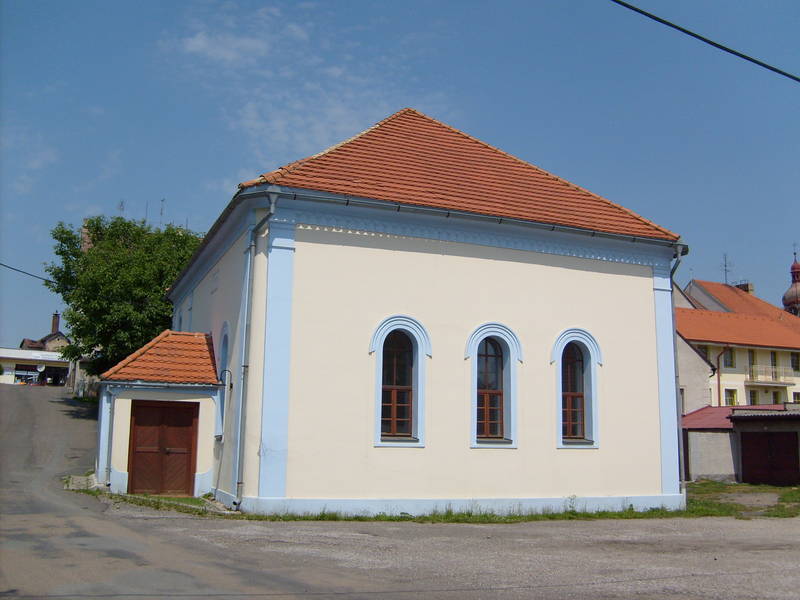The History of the Czech Holocaust Memorial Torah Scroll
Czech Torah Scroll No. 334: From Rokycany to Petaluma
Rokycany – Czech pronunciation: ro - kee - TZAH - nee
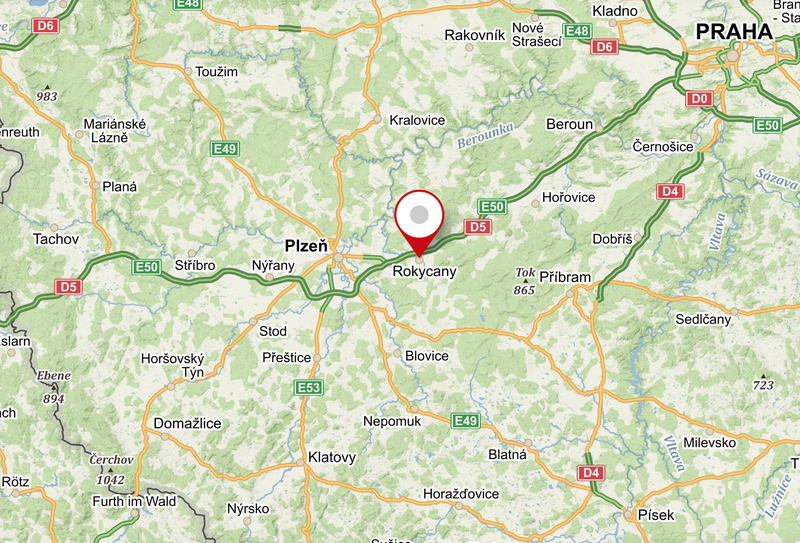
Timeline of Scroll No. 334
- c. 1750: The scroll is created
- 1939: Germany invades Bohemia and Moravia, Czechoslovakia
- 1942: Liquidation of Czech Jewish properties to Prague Jewish Museum
- 1945: Germany surrenders
- 1948: Communist coup places Czechoslovakia under dictatorship. 1,800 Torah scrolls moved from Prague Jewish Museum to the ruins of Michle Synagogue outside Prague
- 1963: The Czech Communist government offers to sell the Torah scrolls to an art dealer in London.
- 1964: Westminster Synagogue, London acquires 1,564 Holocaust Torah scrolls and establishes the Memorial Scrolls Trust to lend the scrolls to Jewish congregations worldwide.
- 1978: At the behest of members Nathan and Ruth Richman, Temple Beth Emunah of Brockton, MA, acquires Torah scroll Number 334, originally from the Czech town of Rokycany.
- 2020: Through efforts of B'nai Israel Jewish Center member Naomi Richman, daughter of Nathan and Ruth Richman, Scroll No. 334 is transferred to B'nai Israel Jewish Center of Petaluma, CA.
- 2021: B'nai Israel Jewish Center officially dedicates Scroll No. 334. The Dedication Planning Committee prepared documents about the Scroll's History and Migration.
More info on the history of the Memorial Scrolls
More than 400 scrolls are on loan across the globe, including England, France, Greece, Spain, Germany, Argentina, the US, Australia and New Zealand. Visit the interactive map on the Memorial Scrolls Trust website.
Rokycany and Its Neighbors
Rokycany is a small town approximately 17km (11 miles) east of Pilsen, the regional capital. Its population in 1939 was 9,865. The Jewish community is known to have existed in the town as far back as 1589, and a synagogue and prayer hall were built in 1871. Unfortunately, the building was demolished in 1981, and it is unknown whether any photos of this important piece of Jewish history exist.
Holocaust survivor Zdenka Fantlova lived in Rokycany from her birth until 1939. She details her idyllic childhood in the town and shares her memories of the Jewish community, as well as the terrible events that followed, in her memoir The Tin Ring.
About 12km (7.5 miles) north of Rokycany is the town of Radnice, with a current population of 1,800. As with Rokycany, the Jewish community there existed from the 16th century, and their synagogue was built in around 1780. The congregation was disbanded and its members relocated to Pilsen and Rokycany in 1935, four years before Nazi Germany invaded. The synagogue in Radnice is still standing, having been saved from demolition by a car repair garage which used the building as its place of business from 1945 to 1992. In 2001, a local ecological society acquired the building and restored it to its original appearance. They now offer tours. The Radnice synagogue is one of the few remaining original Jewish buildings in the region.
Rabbi Isaac Mayer Wise, known by many as one of the fathers of Reform Judaism in the United States, was the rabbi of the Radnice synagogue from 1843 to 1846, before emigrating to the US.
The Massachusetts Connection
From BIJC member Naomi Richman:
My parents, Ruth and Nathan Richman, visited the Czech Memorial Scroll Exhibit in Westminster, England in 1976 and, upon their return to the States, began a two-year journey of obtaining a “wounded” scroll to house and display at their synagogue, Temple Beth Emunah, in Brockton, Massachusetts. The quest for the Torah was of great personal significance to my father, who lived through the Petliura pogroms during the Bolshevik revolution, during which thousands of Jews were murdered and synagogues and shuls were burned. Later in his life, he was again a witness to the destruction and death of Krystallnacht, when he was in Germany working with the authorities there and in Lithuania to allow two Jewish families to leave for the United States. Reading his letters from that time, and the horror he experienced, it is easy to understand that the rescue of the Czech Sifrei Torah was a compelling passion. The scroll was exhibited in the rotunda of Temple Beth Emunah, wrapped in my great-grandfather’s tallit and held by a bindel band embroidered by my mother.
To bring that scroll here completes my own journey. I contacted the Memorial Scroll Trust 15 years ago when I was President of BIJC, but was told there were no scrolls available for custodianship at the time. A few years ago, when I heard that Temple Beth Emunah had sold their building and was combining with another congregation, I contacted them again. They were not ready to pass on the scroll, but last spring, I was contacted by Howard Shore (my mother was his Hebrew School teacher), informing me that the congregation was no longer able to display the scroll.
Between Howard, Jeffrey Ohrenstein of the Memorial Scroll Trust, Rabbi Feldman, and the board, we have been able to carry on the tradition of honoring the dead by keeping the living Torah present.
My father wrote in 1978:
“If I were endowed with the gift of a poet I could more adequately portray the emotional and traumatic effect of receiving your Torah. I felt as though the Sacred Scrolls were living proof of the indestructibility of the Jewish spirit in spite of the destruction of the Jewish body. Synagogues may be destroyed, but Judaism will live on.”
—BIJC Member Naomi Richman
Tue, November 4 2025
13 Cheshvan 5786
Update this content.


